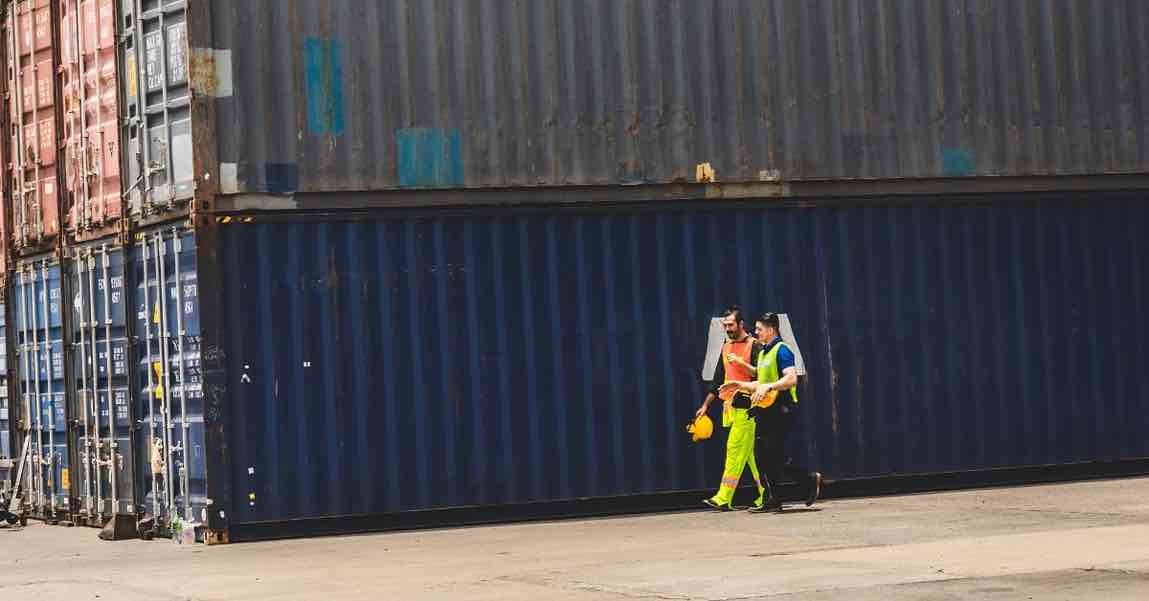Denmark is a country with a strong economy, and much of its success comes from the things it sells to other countries. So, what does Denmark export? Denmark exports many different products, like food, machines, and technology. These exports help the country’s economy grow and also play an important part in the global market.
In this article, we’ll look at the main things Denmark exports and how they help people around the world.
Denmark’s Export Economy: A Key to Success
Exports play a big role in Denmark’s economy, making up about 55% of its Gross Domestic Product (GDP). In 2021, Denmark’s exports were worth $116 billion, which is impressive for a country with only 5.8 million people. This shows just how important exports are to Denmark’s growth and stability.
When people think of Denmark, they might first think of farming and food products. However, Denmark exports a lot more than that! The country is one of the world’s top exporters of medicine, wind turbines, and machinery. For example, in 2020, Denmark’s pharmaceutical industry alone earned over $16 billion from exports.
Denmark is also a leader in clean energy, especially wind power. In 2021, the country exported about $8 billion worth of wind turbines. This focus on renewable energy helps not just the environment, but also boosts Denmark’s economy. Being part of the European Union (EU) also helps Denmark. About 70% of its exports go to other EU countries, making trade easier. Besides Europe, Denmark also trades with countries like the United States, China, and Japan, spreading out its trade relationships.

What Does Denmark Export?
Denmark’s export economy is diverse, offering a variety of products and services that showcase the country’s focus on quality and innovation. So, what does Denmark export? The answer is a wide range of industries and goods that play a big role in the country’s economic success and global reputation.
Pharmaceuticals and Healthcare Products
A major part of Denmark’s export economy is its pharmaceutical and healthcare industry. The country is a leader in the field, with this sector making up about 13% of its total exports. In 2020, Denmark’s pharmaceutical exports alone were worth over $16 billion. Companies like Novo Nordisk, known for its work in diabetes care, highlight Denmark’s strong position in the global healthcare market. This success shows how Denmark combines technology and science to offer innovative solutions that are in high demand around the world.
Industrial Machinery
Denmark is well-known for making high-quality industrial machinery and medical tools, which make up a large part of its exports. The country exports machines like pumps, compressors, and engines, and they account for about 11% of Denmark’s total exports. In 2021, Denmark made around $13 billion from selling machinery to other countries.
Danish companies are recognized for their precision and creativity, providing advanced machines and technology to industries all over the world. This helps build Denmark’s reputation for engineering excellence.
Renewable Energy Technology
Denmark is a leader in renewable energy, especially wind energy. The country is one of the biggest exporters of wind turbines, which help produce clean energy. In 2021, Denmark’s wind turbine exports were worth about $8 billion. Companies like Vestas and Siemens Gamesa are known for making some of the best wind turbines used in sustainable energy projects worldwide. This shows how Denmark is not only committed to protecting the environment but also leading the way in developing new green technologies.
Agricultural Products
Denmark has a strong history of exporting high-quality food and agricultural products. The country is especially known for its pork and dairy products. In 2020, food and agriculture made up about $14 billion of Denmark’s total exports. Denmark is one of the largest pork exporters in the world, with its pork sold mainly in Europe and Asia. Danish dairy products, like butter and cheese, are famous for their quality and are in high demand in many countries.
Electronics
Denmark is also known for its high-quality electronics and electronic parts. In 2021, Denmark exported electronics worth around $5 billion. This includes audio and visual equipment, telecommunications devices, and precise instruments used in technology. These products show how Denmark creates innovative and reliable electronic solutions that are used by people all around the world.
Seafood
A big part of Denmark’s exports is seafood. The country has a thriving fishing industry, with fish and shellfish being some of its most important exports. Every year, Denmark earns around $3 billion from seafood exports, which include popular fish like salmon, mackerel, and Atlantic cod. Denmark is known for using sustainable fishing practices, which help protect marine resources. This commitment ensures that Denmark can supply high-quality seafood to countries around the world while taking care of the environment.
What Does Denmark Export? History and Economic Benefits
When we look at “What does Denmark export,” we’re not just talking about the things the country sells to other nations. We’re also understanding the history and values that shape Denmark’s trading today. The country’s focus on quality, sustainability, and new ideas is a big part of how it approaches global trade.
Historical Foundations
Denmark has been involved in trade for many centuries, thanks to its great location by the sea. In the past, Denmark’s trade was mostly based on farming products and fish, which were easy to send to other countries by sea. This helped Denmark build a strong foundation for its exports today.

However, after World War II, Denmark’s economy grew quickly, becoming more industrialized and modern. This change helped Denmark expand its exports, moving from just farming goods to things like machinery, medicine, and technology. By the 1980s, Denmark became a leader in wind energy, which helped make its renewable energy exports a big part of its economy today.
Economic Impact on Global Relations
When we ask “What does Denmark export,” we can also understand how it connects with the rest of the world economically. The European Union (EU) is Denmark’s biggest trading partner, with over 70% of its exports going to EU countries. For example, in 2021, Germany alone made up 12% of Denmark’s exports, totaling about $14 billion. These strong ties are important for keeping Europe’s economy stable.
But Denmark doesn’t just rely on Europe. It also has strong trading relationships with countries like the United States and China. In 2021, exports to the US were valued at about $7 billion, while exports to China totaled around $3.4 billion.
Conclusion: What Does Denmark Export?
Denmark’s export economy reflects its smart planning and focus on quality, sustainability, and innovation. By blending its historical trading roots with cutting-edge technology, Denmark has become a major player in global trade. As the country continues to grow in areas like renewable energy and tech, its diverse range of exports helps fuel both its economic success and global influence.
Denmark’s approach to exports shows how even a small country can thrive in the world market, making a positive impact while sustaining prosperity. From medicines to green energy and delicious food, Denmark’s exports prove that nations, big or small, can shape global markets in powerful ways.
Summary – What Does Denmark Export?
- Denmark boasts a diverse export economy, with products ranging from pharmaceuticals and machinery to renewable energy and food products.
- Denmark is a major player in the pharmaceutical industry, with exports exceeding $16 billion in 2020.
- As a leader in wind technology, Denmark exported approximately $8 billion worth of wind turbines in 2021, highlighting its commitment to sustainability.
- Denmark channels over 70% of its exports to EU countries, with Germany being a significant trading partner.
- Beyond Europe, Denmark maintains strategic economic relationships with the US and China, reflecting its balanced and diverse export strategy.
- Denmark integrates sustainability across its export sectors, including widespread organic agricultural products and sustainable fishing practices.
- With substantial investments in R&D, Denmark leverages technological advancements to maintain a competitive edge in global markets.
Frequently Asked Questions – What Does Denmark Export?
1. What are Denmark’s top export products?
Denmark’s top export products include pharmaceuticals, machinery and industrial equipment, renewable energy equipment (especially wind turbines), food products such as pork and dairy, electronics, and seafood.
2. How does renewable energy factor into Denmark’s exports?
Denmark is a global leader in wind turbine technology, with such equipment forming a significant part of its exports. In 2021, wind turbine exports were valued at approximately $8 billion, reflecting Denmark’s commitment to sustainability and clean energy.
3. What role does the European Union play in Denmark’s exports?
The EU is Denmark’s largest trading partner, receiving over 70% of its exports. EU membership provides Denmark with seamless access to the single market, significantly aiding its export economy.
4. Which countries outside the EU are trade partners for Denmark?
Outside the EU, Denmark has strong trade relations with the United States and China, with exports to these countries valued at $7 billion and $3.4 billion respectively in 2021. These relations exemplify Denmark’s global economic reach.
5. What percentage of Denmark’s GDP is generated by exports?
Exports constitute around 55% of Denmark’s GDP, demonstrating their crucial role in the country’s economy and international trade dynamics.
6. Which Danish companies are leading in export markets?
Major Danish companies leading in export markets include Novo Nordisk in pharmaceuticals, Vestas and Siemens Gamesa in wind technology, and Arla Foods in dairy products.
7. Has the COVID-19 pandemic affected Denmark’s exports?
While the pandemic affected global trade, Denmark’s diverse export market and strong sectors like pharmaceuticals helped mitigate adverse impacts, maintaining a robust export economy.



